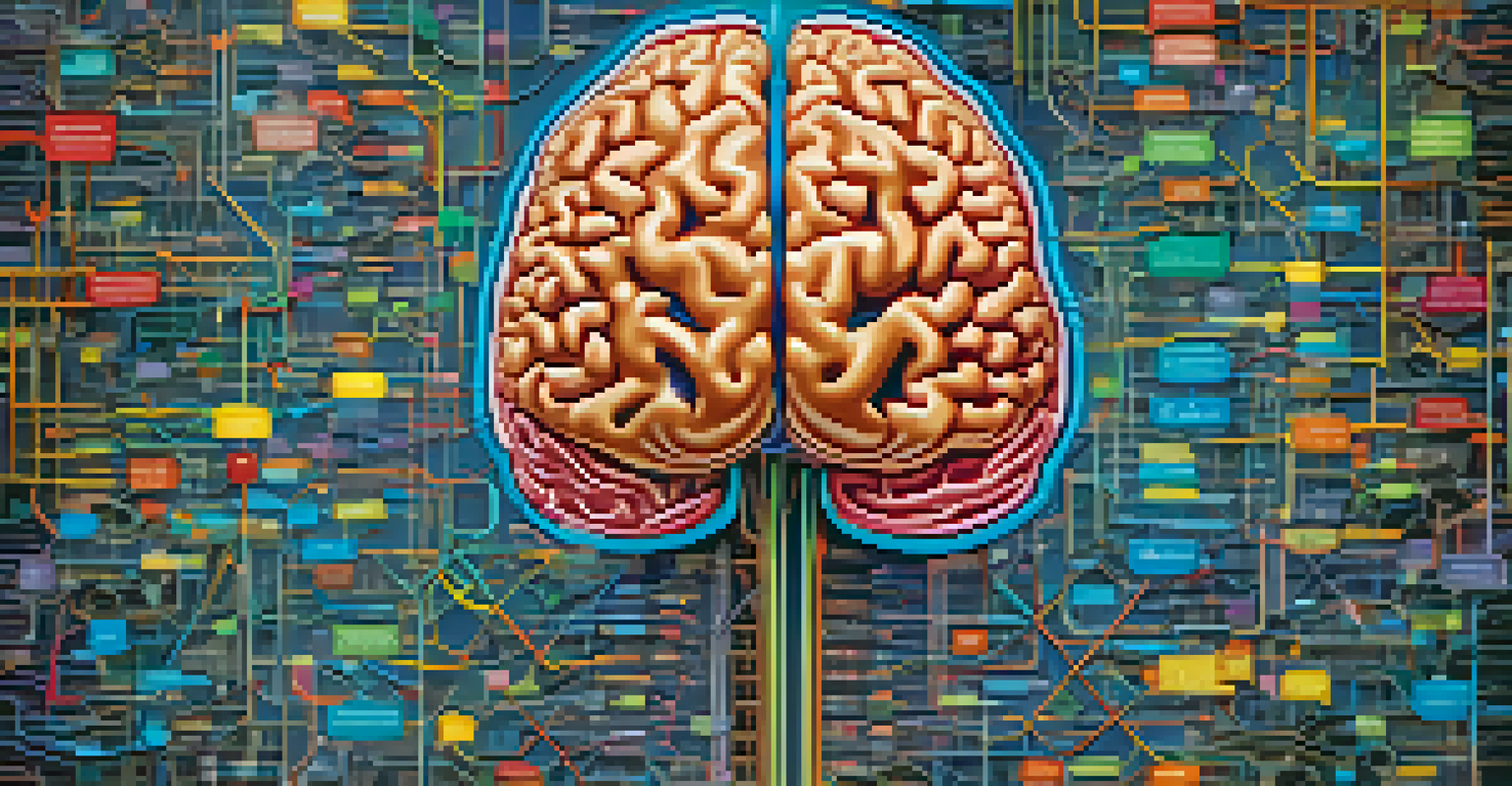Neuroscience of Language Acquisition: Learning to Communicate

Understanding Language Acquisition: A Brain Perspective
Language acquisition is the process through which humans learn to communicate. It's fascinating to see how our brains develop the ability to understand and produce language. Neuroscience offers insights into how neural connections form as we learn to speak and comprehend words from a young age.
The limits of my language mean the limits of my world.
From babbling infants to fluent speakers, our brains undergo significant changes that facilitate language learning. Research shows that specific areas in the brain, like Broca's and Wernicke's areas, play crucial roles in processing language. These regions help us not only form sentences but also grasp their meanings.
Understanding these processes helps us appreciate the complexities of language. It also sheds light on why some children pick up languages quickly while others face challenges. By studying the brain's role in language acquisition, we can better support diverse learning experiences.
The Critical Period Hypothesis in Language Learning
The Critical Period Hypothesis suggests that there is an ideal window for language acquisition. This theory posits that children are particularly adept at learning languages before puberty. During this time, their brains are more plastic, meaning they can easily adapt and form new neural connections.

For instance, young children often learn languages by simply being immersed in them, picking up sounds and patterns effortlessly. This ability diminishes as they grow older, which is why adults often struggle more with learning new languages. Understanding this hypothesis emphasizes the importance of early exposure to language.
Language Learning and the Brain
Neuroscience reveals how our brains develop language skills and the specific areas involved in processing and producing language.
The implications of this theory extend beyond just learning new languages; it also influences how we teach languages to children. By creating rich linguistic environments, we can harness this critical period to foster better communication skills in young learners.
The Role of Social Interaction in Language Acquisition
Social interaction plays a pivotal role in how we acquire language. Engaging with caregivers and peers helps children learn the nuances of communication, from tone to body language. This interaction allows them to practice their skills in real-life contexts, which is essential for language development.
Language is the road map of a culture. It tells you where its people come from and where they are going.
Research indicates that children who have more conversational interactions are better at language acquisition. These exchanges help reinforce what they hear, allowing them to mimic sounds and structures effectively. It’s like learning to ride a bike; the more you practice, the better you get.
Incorporating play and social activities into language learning can enhance this process. By fostering an environment rich in dialogue, we can support children in developing their communication skills naturally and effectively.
Neuroscience Insights: How the Brain Processes Language
The brain processes language through a complex network of regions working in harmony. When we hear or speak a language, various areas light up, showing how our brains decode sounds and meanings. This intricate dance highlights the amazing capabilities of our neural pathways.
For example, when we listen to someone speak, our auditory cortex interprets the sounds, while our Broca's area helps us formulate responses. This seamless interaction enables us to engage in conversation fluidly. Neuroscience studies have shown that even reading involves similar brain regions.
Critical Period for Language Learning
The Critical Period Hypothesis indicates that children are most effective at learning languages before puberty due to the brain's heightened plasticity.
Understanding how the brain processes language can improve teaching strategies. By aligning educational methods with how our brains naturally operate, we can create more effective language learning experiences for learners of all ages.
Bilingualism and the Brain: Cognitive Benefits
Bilingualism offers fascinating insights into language acquisition and brain function. Studies show that individuals who speak multiple languages often have enhanced cognitive abilities. This is largely due to the brain's increased capacity for managing and switching between different language systems.
For instance, bilinguals tend to demonstrate better problem-solving skills and creativity. This cognitive flexibility arises because their brains are constantly working to differentiate and apply different languages. It’s like having a mental gym where the brain exercises its language muscles.
Encouraging bilingualism not only enriches communication skills but also supports overall cognitive development. As we understand the benefits of bilingualism, we can promote multilingual environments that foster both language skills and cognitive growth.
Language Disorders: Insights from Neuroscience
Language disorders, such as dyslexia or aphasia, provide critical insights into the neuroscience of language acquisition. These conditions arise when specific brain areas responsible for language processing are affected. Understanding these disorders helps researchers identify how different brain functions contribute to communication.
For example, dyslexia is linked to difficulties in processing sounds, which can affect reading and writing skills. On the other hand, aphasia often results from brain injury, impacting a person's ability to produce or understand language. By studying these disorders, we gain a clearer picture of the neural mechanisms involved in language acquisition.
Bilingualism Enhances Cognitive Skills
Being bilingual not only improves communication abilities but also boosts cognitive functions like problem-solving and creativity.
This knowledge can lead to better interventions and support systems for individuals facing language challenges. By understanding the brain’s role in these disorders, we can develop tailored strategies that facilitate communication and learning.
Future Directions: Neuroscience and Language Learning
As neuroscience continues to evolve, so do our approaches to language learning. New technologies, such as brain imaging and neurofeedback, are providing deeper insights into how we learn languages. These advancements could revolutionize how educators approach language acquisition.
For instance, understanding which neural pathways are activated during language learning can inform teaching methods. It opens up possibilities for personalized learning experiences that cater to individual brain functions. Imagine tailored language programs that adapt based on a learner's unique neural responses!

The future of language acquisition is bright, with neuroscience paving the way for more effective and engaging learning experiences. By embracing these developments, we can enhance our understanding of language and communication for generations to come.